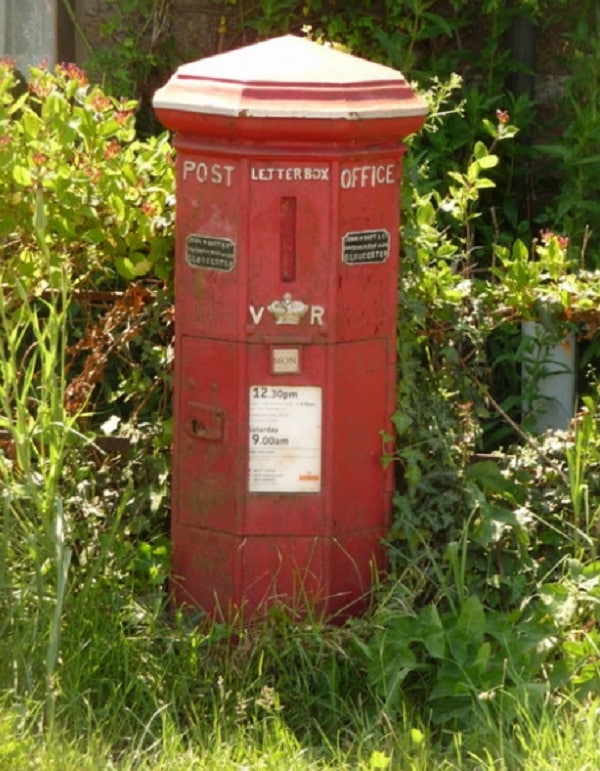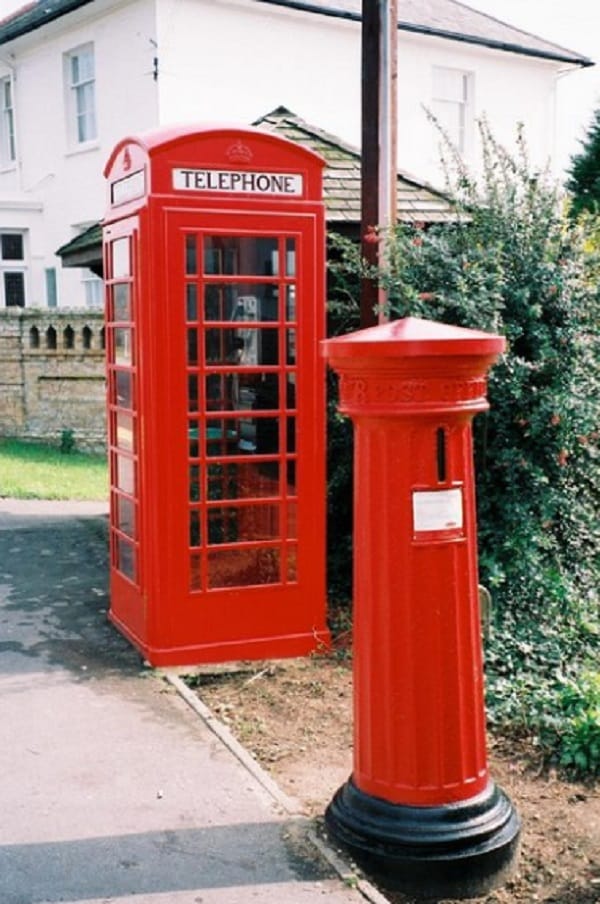The first trial of a pillar box was considered a success and boxes began appearing on the British mainland from 1853. During this initial period, design, manufacture and erection of boxes was mostly the responsibility of local surveyors. This meant that no standard pattern of box was issued and resulted in many, very differing, styles.
In basic form all boxes were vertical ‘pillars’ with a small slit to receive letters. There the similarities ended. By 1857 horizontal, rather than vertical, apertures were taken as a standard. Flaps were trialled over the apertures to prevent rain finding its way inside and the position of apertures were settled to below a slightly protruding cap. As developments progressed more and more lessons were learnt about the most effective type of boxes.
Amongst the oldest ones in the UK, Sherborne and Mudeford hold an historic distinction. Sherborne is in fact the oldest on the mainland UK and Mudeford comes in at 6th.
Sherborne

Mudeford

Why Red?
The earliest boxes on Jersey were red, however a change was made in 1859 when the colour for all post boxes was standardised as… green. Today the colour of British letter boxes is as much part of the iconic nature of the box as any other feature. The early green painted boxes were unobtrusive, excessively so. Complaints were received by people having difficulty finding them and a return to red was specified in 1874. It took 10 years to complete the programme of re-painting. Red remained the standard colour for boxes from then on with few exceptions.
Standardising the design
By 1859 the Post Office realised having so many different designs of letter boxes across the country was proving expensive. They issued instruction that a new standard box was to be introduced.
It was to be available in two sizes, a larger, wider size for higher volume areas and a smaller narrower version for elsewhere. It took its lesson from the early experiments and was cylindrical with a horizontal aperture and a hood to help keep out the rain.
It failed to prove popular in all districts and in 1862 the District Surveyor for Liverpool commissioned his own, non-standard box, known today as the Liverpool Special.
This broke the standard pattern and so in 1866 the Post Office again produced a standard letter box. This time the box was designed by J W Penfold and came in three sizes. Problems were encountered with some of the early designs however and modifications were made, such as the inclusion of downward-pointing shoots to help prevent letters being caught up in the cap of the box. The ‘Penfold’ letter box while not particularly a success operationally was very popular with many people.
As a standard box however it was not to survive. In 1879 a further standard box was produced. This time more of the earlier lessons were taken on board. The new standard box at last resembled the letter box that is today the iconic image of Britain – cylindrical with round cap and horizontal aperture under a protruding cap with front opening door and black painted base.
From 1879 onwards this box continues to be one of Britain’s most recognisable symbols. Changes did occur to the box, and into the 20th century new styles of box were introduced. This box continues, however, to prove to be the most effective design for the job. It was initially produced, in two sizes, designated, and still recognised, as the type A (larger, wider box) and type B (smaller, narrower box).
The reign of Queen Elizabeth has seen the biggest variety of boxes since the early Victorian experiments. In 1968 square sheet steel boxes were introduced as a trial but were found to be ineffective, in 1974 a cast iron variant was launched and examples of this can still be seen in use.
The Square boxes were never as popular and cylindrical designs continued. In 1995 square boxes were once more re-visited with the introduction of business boxes. These were expressly for use by companies with bulk postings.
More recently there has been a growth in internal glass re-enforced plastic boxes, appearing in shopping centres and supermarkets.
Letter boxes today
Cheaper boxes, constructed of sheet steel, are appearing in increasing numbers both to complement existing and replace worn out or damaged boxes.
Source:
If you like our content please keep us going for as little as £2 a month https://dorseteye.com/donate/







I have never seen a “working” post box – what does it do??? Now, if you meant post-boxes still in use, why not say so ?